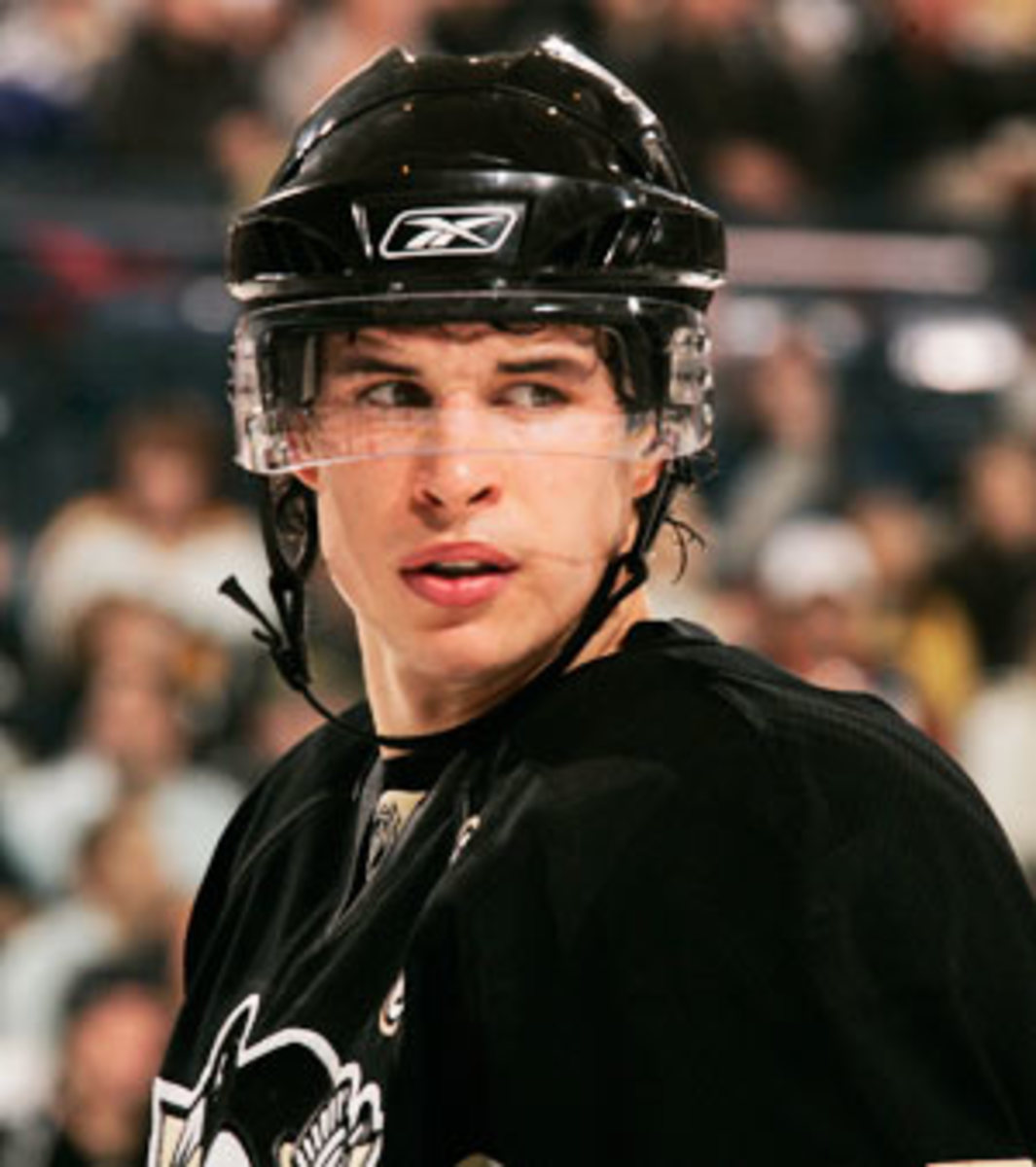Return date uncertain, Crosby's plight reminds of concussion dangers
Sidney Crosby's return date remains unclear as he recovers from a serious concussion sustained in January. (Lou Capozzola/Sports Illustrated)
By Stu Hackel
The old joke was the three fastest forms of communication were television, telephone and tell someone in hockey. So the wildfire sort of Twitter activity that some believe accelerate stock market rises and tumbles are nothing new in this sport, just technologically enhanced.
The status of the Penguins' Sidney Crosby got Tweeps all crazy on Sunday following a post by Josh Rimmer of XM Radio's NHL Home Ice, who tweeted that he was "hearing from 3 sources now that Sidney Crosby won't b ready 2 start season. I hope its not true because the NHL needs its best players!" Later in the day, Rimmer said Crosby was still training in Halifax but was experiencing headaches, and he added that he'd sat on the story for two weeks.
Since gossip is often treated like fact in our culture, it's probably no surprise that Rimmer's tweet was endlessly retweeted and inflated and the resulting rumor-fest caused the Penguins to schedule a news conference for Monday afternoon to clarify Crosby's status.
Here's video of that briefing by GM Ray Shero, but even before that, the rumors prompted him to speak with both Shelly Anderson of The Pittsburgh Post-Gazette and Rob Rossi of The Pittsburgh Tribune-Review late Sunday evening. They reported that Shero said Crosby was progressing with his training as expected.
"I talked to Sid over the weekend, and I've been in touch with his doctors," Shero told Anderson. "I think he's progressed very well this summer. He's had some symptoms at times, which is typical of his injury." And Shero said nothing has yet been determined about whether he'd be ready for training camp.
"He's pushed himself, which is good," Shero told Rossi. And the GM also noted that Crosby "seemed good" in the phone conversations between the two.
A month ago, when it was reported that Crosby had resumed his workouts, it was stated that this was no guarantee he'd be ready for camp in September. He remains clear to train, although he has yet to be cleared for contact since being sidelined in early January. That's when he suffered these hits in consecutive games, the first in the Winter Classic, when David Steckel, then of the Capitals, ran into him.
And then Tampa Bay's Victor Hedman.
Hedman's was a seemingly routine hit that left many wondering about why Crosby played against Tampa Bay on Jan. 5, after he was so obviously staggered on New Year's Day.
It was one of the watershed incidents last season that has led the NHL to toughen its procedures on clearing players to return after severe contact to the head and broadening Rule 48 on hits to the head.
"He will not be asked to play or pushed to play or cleared to play one minute before he's ready to play," Shero said Sunday. "That said, he's come a long way this summer."
Crosby is hardly the lone NHLer who has suffered long-term concussion-related problems. But he is the highest-profile player and, sadly, sometimes that's what it takes to get people's attention. I've always viewed the Steckel hit as more of an accident -- and I know that is not the universal opinion -- but one that unfortunately "softened" Crosby up for the Hedman hit to take him out. Regardless, Crosby's plight reveals just how devastating head contact can be. And that's why even the newest version of Rule 48, which has outlawed many more but not all deliberate hits to the head, is flawed.
It's been said often here -- and no doubt we'll have to say it again -- that injuries to the head and brain are not like injuries to other parts of the body and can't be treated the same way. As good as the NHL has been over the last few years on researching checks to the head, policing them and amending the rules accordingly -- and it's been pretty good for a league with a sometimes-undeserved reputation for moving at glacial speeds -- there is still some outdated thinking among important decision-makers, holding back progress in an attempt to preserve deliberate head contact in some form.
That's a grave danger to the game and those who play it. Hopefully, it won't take another serious head injury for the NHL to recognize that danger but, because of that backward thinking, it probably will.

































